Parcheesi game rules
Parcheesi is a race game, very similar to Ludo, introduced in England in 1896 from the indian game Parchisi.
The goal of the game is to complete a cruciform route through the board with several pieces that move according to the die rolls.
Board, dice and pieces
Traditionally four players take part in the game, using different colors: yellow, blue, red and green. Each of them have four pieces and one die.
The board has different zones:
- Start zones or homes, one for each color, placed in the four corners of the board.
- A common path with 68 squares, by which all the pieces must travel.
- Final passage and square for every color, starting from the four sides and joined in the center of the board.
Moving the pieces
At the beginning of the game each player has two pieces on the initial square of the path, and the remaining pieces stay at home.
At every turn players roll the die and advance one of their pieces according to its value and these rules:
- If the value is 5 and the home is not empty, one piece must be placed in the starting square of the path.
- Pieces advance following the path counterclockwise.
- When one of the pieces completes a whole turn and arrives to the square that connects with the passage of the same color, it turns to the destination square in the center of the board.
- If the value is 6 and the home of the same color is empty, the piece must advance 7 squares.
- The player who has rolled a 6 plays again.
- There can be a maximum of two pieces in every square. One piece can be moved if the destiny square is already occupied by two pieces.
- It is not possible to traverse barriers. Barriers are pairs of pieces of the same color placed on the same square.
- The last advance of the pieces must coincide with the exact number of squares they need to reach the destination square. The piece cannot be moved when the value of the roll is higher than needed.
- When one piece reaches the destination, the player must advance 10 squares with another piece.
- Sometimes all the pieces may be blocked (because they are at home, behind a barrier, or have ended their path). In this case, the player simply loses their option to move.
Captures
One piece captures another one when it reaches the same destination square and their colors are different.
- The starting square of the path and all the circled squares are sure, where captures are not possible. So two pieces of different colors can be together in the same square.
- If there are two pieces of different color on the starting square and another piece arrives from its home, the piece of different color (or, if both are, the last piece arrived to the square) is captured.
- Captured pieces go home, so that they return to the path when the player rolls a 5.
- The player who captures one piece gets immediately the prize of advancing 20 squares with any piece.
- If one player rolls three sixes consecutively, the third move cannot be made, and the piece moved with the previous six is captured, unless it has reached the final passage.
Playing in Ludoteka
Playing parcheesi is very simple: you just have to ckick on the piece to move. Additionally, take into account these possibilities:
- In the game access confirmation panel you can choose your preferred colors. The system will use this preference whenever possible.
- Among the options that appear in the upper right of the game window, you can choose to preview your next roll.
- If you click a piece before your turn, it is preselected and marked with an arrow, so that it will be automatically moved when your turn arrives.
Play modes in Ludoteka
Ludoteka offers four different modes to play parcheesi online:
 Parcheesi Individual 4
Parcheesi Individual 4
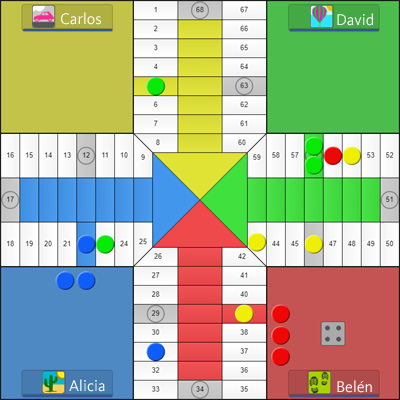
This is the simplest mode: each player handles one color, and there are no teams. The game ends when the winner completes the path with the four pieces.
against robots
that is being played now
 Parcheesi By Pairs.
Parcheesi By Pairs.
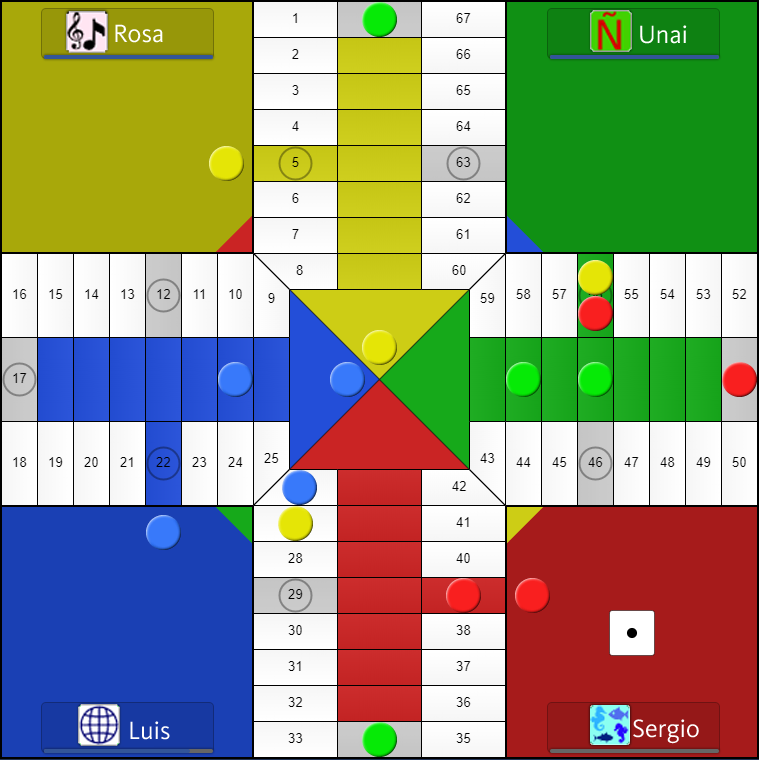
This is the most popular among all the game variants offered in Ludoteka.
- Two pairs of players take part in the game, using alternate colors: yellow and red against blue and green.
- Each player moves the pieces of the own color. However, if they cannot move (for example, because the four pieces have ended their path), one of the partner's pieces must be moved.
- Pieces if different color can capture each other, even if they are of the same team.
- The winner is the team whose eight pieces complete the path.
against robots
that is being played now
 Parcheesi One Against One
Parcheesi One Against One
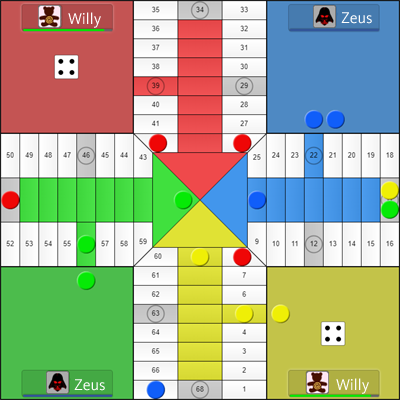
This is a mode in which players take more control of the game, because they usually have more pieces that can be moved on each roll.
- 2 players take part in the game. They handle two colors: yellow and red against blue and green.
- Players can choose any of their pieces in every move, regardless of color.
- Different color pieces can capture each other, even if they belong to the same player.
- The winner is the player who completes the path with the eight pieces (four of each color).
against robots
that is being played now
 Parcheesi 6 pieces
Parcheesi 6 pieces
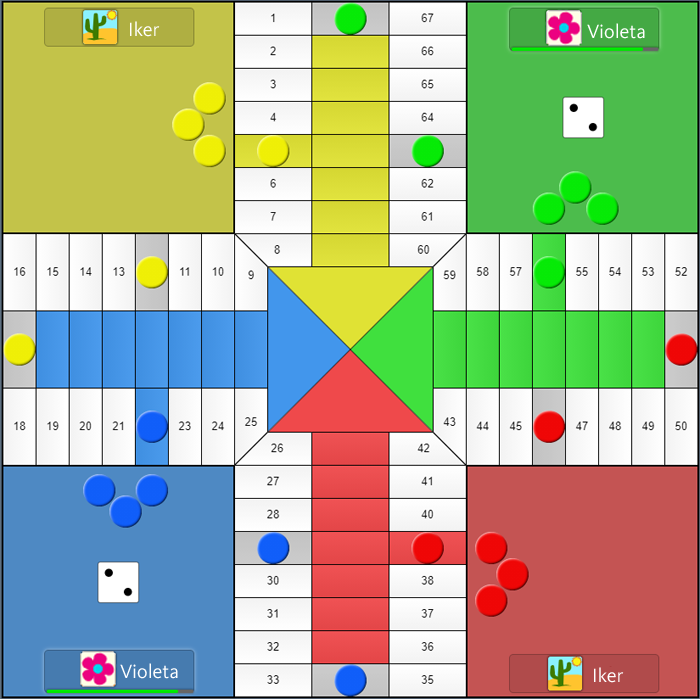
This variant is also played individually between two players, and requires paying great attention.
- 2 players take part in the game. They handle two colors (yellow and red against blue and green) that may be moved indistinctly in each turn .
-
There are 6 tiles of each color .
Initially, there are three pieces of each color located in the first three safe squares of their route. - Different color pieces can capture each other, even if they belong to the same player.
- The winner is the player who completes the path with the 6 pieces of one of the colors.
against robots
that is being played now
 Parcheesi 3 Against 3
Parcheesi 3 Against 3
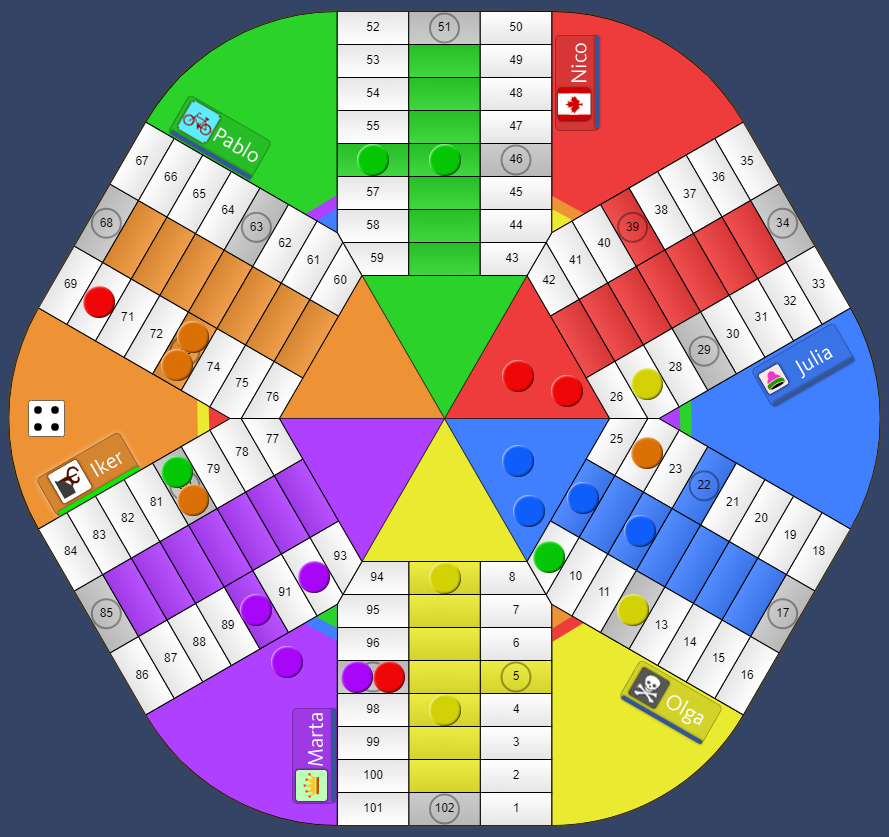
A six color board is used in this mode. As a result, games use to be much longer because there are more pieces and they have to complete longer paths.
- 6 players take part. They form two teams, using alternate colors: yellow, red and orange against blue, green and turquoise.
- Each player moves the pieces of the own color. However, if they cannot move (for example, because the four pieces have ended their path), one of the partners pieces must be moved.
- Pieces if different color can capture each other, even if they are of the same team.
- The winner is the team whose twelve pieces complete the path.
against robots
that is being played now